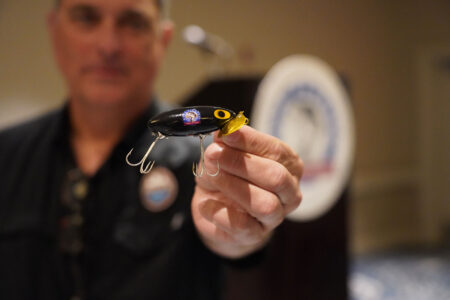According to the Atlantic States Marine Fisheries Commission (ASMFC), the most recent assessment update for weakfish indicates the stock “continues to be depleted and has been since 2003.” Under the reference points, the stock is considered depleted when the stock is below a spawning stock biomass (SSB) threshold of 30% (13.6 million pounds). In 2017, SSB was 4.24 million pounds.
While the latest 2019 assessment indicates some positive signs in the weakfish stock in the most recent years, with a slight increase in SSB and total abundance, the stock is still well below the SSB threshold. Given the weakfish management program is already highly restrictive with a one fish recreational creel limit, 100-pound commercial trip limit, and 100-pound commercial bycatch limit, ASMFC has taken no management action at this time.
The assessment indicates natural mortality (e.g., the rate at which fish die because of natural causes such as predation, disease, and starvation) has been increasing since the early 2000s. ASMFC explained that fishing mortality was also high during the mid- to late 2000s, so even though harvest has been at low levels in recent years, the weakfish population is still experiencing high levels of total mortality (both fishing and natural mortality) which is preventing the stock from recovering.
To better address the issues impacting the weakfish resource, the ASMFC Technical Committee recommends the use of total mortality (Z) benchmarks to prevent an increase in fishing pressure when natural mortality is high. The assessment proposes a total mortality target of 1.03 and threshold of 1.43. Total mortality in 2017 was 1.45, which is above both the threshold and target, indicating that total mortality is too high. Fishing mortality has increased in recent years, but was below the threshold in 2017.
Weakfish commercial landings have dramatically declined since the early 1980s, dropping from over 19 million pounds landed in 1982 to roughly 180,560 pounds landed in 2017. The majority of landings occur in North Carolina and Virginia and, since the early 1990s, the primary gear used has been gillnets. Discarding of weakfish by commercial fishermen is known to occur, especially in the northern trawl fishery, and the discard mortality is assumed to be 100%. Discards peaked in the 1990s but have since declined as the result of management measures and a decline in stock abundance.
Recreational landings and live releases of weakfish have also declined over time. It is assumed that 10% of weakfish released alive die, so that total recreational removals are equal to the number of weakfish landed plus 10% of the weakfish released alive. The assessment update used the new time-series of calibrated estimates of landings and live releases from the Marine Recreational Information Program (MRIP) which were higher than the values used in the 2016 benchmark assessment, but showed the same overall trend.
According to ASMFC citing the MRIP data, total recreational removals of weakfish peaked in 1987 at 20.4 million pounds and have declined since then to slightly less than 500,000 pounds in 2017. The proportion of fish released alive has increased over time; over the past 10 years, 88% of weakfish were released alive. Most of the recreational catch occurs in the Mid-Atlantic between North Carolina and New Jersey.
In New Jersey and Delaware, the limit on weakfish is one fish at 13 inches or greater; in New York, the size limit is 16 inches in minimum size with a one fish bag limit.



